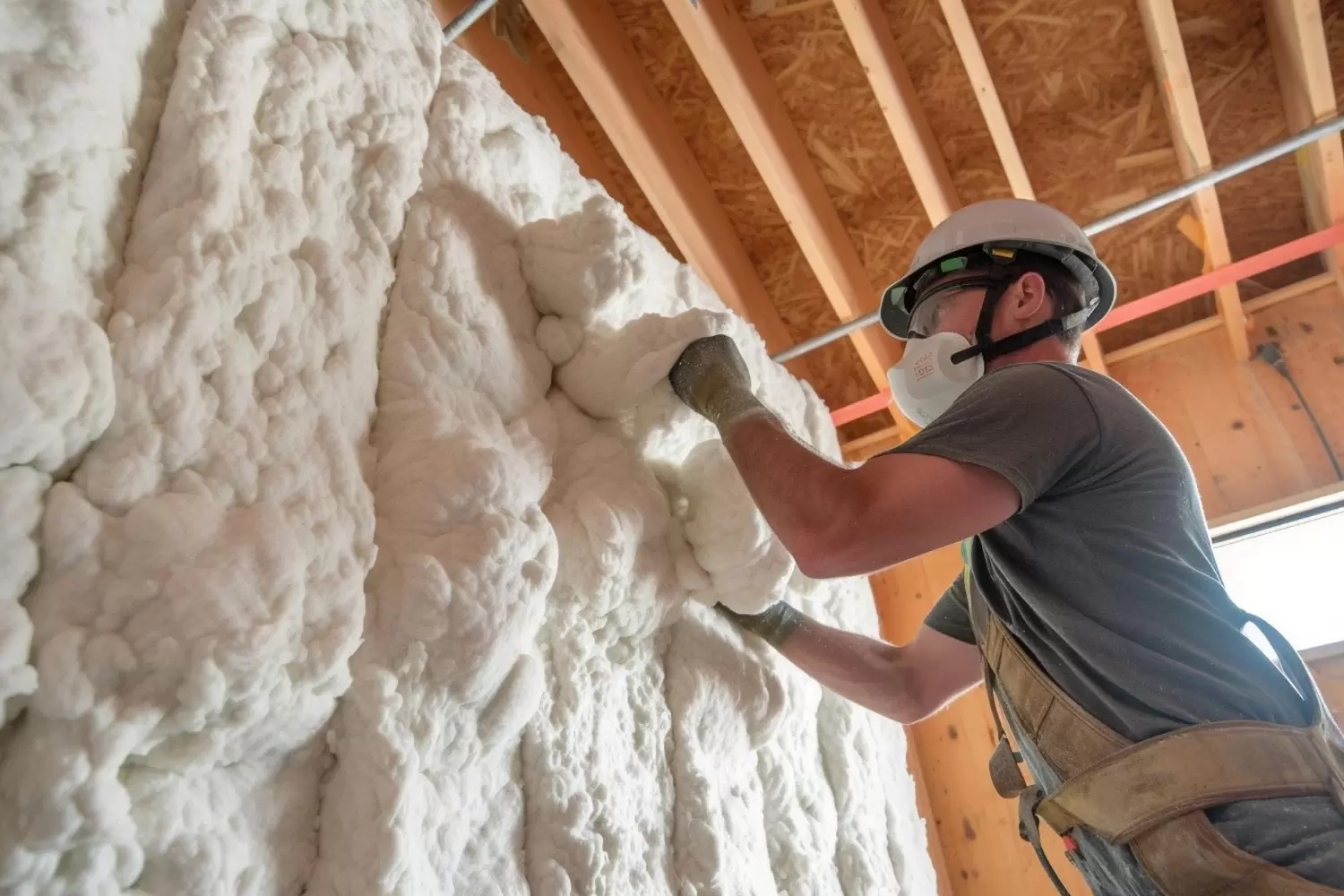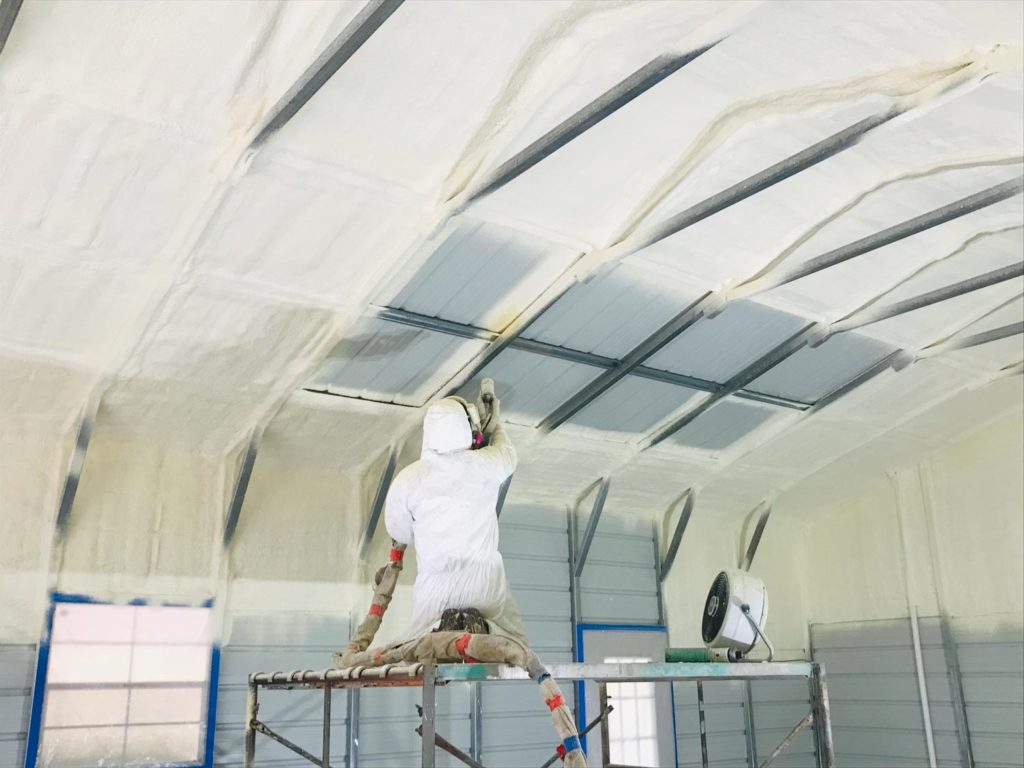Exactly How Spray Foam Can Boost Energy Effectiveness in Any Type Of Building
Spray foam insulation has actually arised as a pivotal solution for boosting energy efficiency across different building types. By developing an impermeable seal that decreases air leak, it effectively manages interior climates while dramatically lowering cooling and heating costs. Moreover, its excellent R-value and moisture-resistant properties add to lasting energy cost savings and improved building durability. As property owners increasingly look for lasting services, the effects of spray foam insulation extend past simple utility cost savings. The complete scope of its benefits, however, warrants a more detailed evaluation of exactly how it can change power administration strategies in both household and commercial setups.
Comprehending Spray Foam Insulation
Spray foam insulation is significantly recognized for its exceptional thermal performance and versatility in different applications. Composed largely of polyurethane, this insulation product is used as a fluid that broadens upon call, loading voids and developing a smooth obstacle. This one-of-a-kind building allows spray foam to comply with irregular surfaces, making it a perfect choice for both commercial and residential structures.

Application of spray foam insulation is typically done by experienced professionals using customized devices, making certain optimal performance and safety - Spray Foam. The curing process is fast, enabling fast installment and very little disturbance. As a result, spray foam insulation is increasingly being employed in new construction and retrofitting projects due to its capability to improve architectural stability while enhancing general power effectiveness in structures
Benefits of Energy Efficiency
Energy effectiveness plays an essential function in minimizing operational costs and minimizing ecological influence across numerous industries. By maximizing power usage, organizations and property owners can accomplish substantial savings on energy bills, which directly enhances monetary efficiency. Effective power intake implies much less reliance on fossil fuels, thereby adding to a decrease in greenhouse gas exhausts and advertising a more sustainable atmosphere.
Additionally, energy-efficient buildings often experience raised home values. As power prices climb and sustainability becomes a concern for customers, homes with improved power effectiveness features are more attractive on the marketplace. This fad urges financial investment in energy-saving innovations, which can additionally drive advancement and financial development.
In enhancement to environmental and economic benefits, energy efficiency can also improve the general convenience and wellness of indoor areas. Correct insulation and effective heating & cooling systems aid maintain consistent temperature levels, minimizing drafts and moisture degrees, which consequently can cause much better indoor air high quality.
Eventually, the benefits of energy efficiency extend beyond instant cost savings, fostering a resilient economic climate, advertising ecological stewardship, and improving the high quality of life for residents in any structure.
How Spray Foam Works
Generally used as a fluid, spray foam broadens swiftly upon call with surfaces, creating a strong barrier that effectively secures spaces and cracks. This distinct residential property is due to its chemical make-up, primarily consisting of polyols and isocyanates, which respond when mixed to develop a foam that sticks and fills gaps to various materials, consisting of steel, timber, and concrete.
Once applied, the foam increases to a number of times its initial quantity, making certain a tight seal that protects against air leakage. This procedure significantly decreases thermal linking, which happens when warmth transfers through products, bring about energy loss. The foam's find more info high R-value, an action of thermal resistance, adds to enhanced insulation by decreasing warmth transfer between the interior and outside settings.
Additionally, spray foam is resistant to dampness and pests, even more improving its efficiency in maintaining power efficiency. Its application can be tailored to different areas, consisting of attic rooms, wall surfaces, and crawl areas, optimizing insulation across a building. Spray Foam. Generally, the innovative style and application technique of spray foam make it a reliable remedy for boosting energy performance in any kind of framework, causing minimized power costs and a much more sustainable developed atmosphere

Applications in Different Structures
Various applications of spray foam insulation can be located across various building types, enhancing power performance and convenience. In property homes, spray foam is commonly utilized in walls and attic rooms to create a seamless obstacle versus air leaks, considerably reducing heating and cooling down needs. This application is particularly valuable in older homes, where traditional insulation may be poor.
In commercial buildings, spray foam insulation is put on roof covering systems and outside walls, which assists to boost thermal performance and safeguard versus moisture invasion. Its light-weight nature makes it a suitable selection for retrofitting existing structures without adding considerable weight. Furthermore, spray foam can be made use of in industrial settings to protect pipelines and storage space tanks, maintaining temperature level control for delicate products.
Institutional structures, such as hospitals and schools, benefit from spray foam insulation by making sure a regular interior climate that supports resident comfort and health. The flexibility of spray foam enables it to adjust to numerous structure forms and sizes, making it a favored option for engineers and contractors seeking reliable insulation remedies. On the whole, spray foam insulation works as an sites essential element in achieving energy-efficient buildings throughout all markets.
Long-Term Cost Cost Savings
Spray foam insulation offers significant lasting expense savings for structure proprietors and residents by decreasing power intake and reducing utility expenses. By offering a premium air seal, spray foam lessens the infiltration of outdoors air, therefore boosting the thermal performance of a structure. This leads to more reliable heating and cooling procedures, which can result in substantial decreases in energy prices gradually.
In addition to instant savings on energy bills, the durability and long life of spray foam insulation contribute to its economic advantages. Unlike typical insulation materials, which might sag, resolve, or weaken, spray foam keeps its performance for decades, minimizing the need for regular substitutes or repair work. This longevity converts to lower maintenance expenses and much less disruption for occupants.
In addition, buildings geared up with spray foam insulation usually delight in a boost in residential or commercial property worth, making them more attractive to prospective customers or lessees. As energy efficiency comes to be significantly prioritized, buildings with reliable insulation solutions stick out out there. Inevitably, the assimilation of spray foam insulation not just enhances comfort but additionally stands for a strategic investment that yields significant economic advantages over the lengthy term.
Verdict
Finally, spray foam insulation acts as a vital component in boosting power performance throughout varied structure types. Its ability to create a seamless obstacle versus air leakage, integrated with moisture-resistant properties and high r-values, significantly reduces power usage and associated prices. The implementation of spray foam not only contributes to consistent indoor temperature levels but additionally boosts home value, emphasizing its role as a prudent financial investment for both business and domestic homes.
Spray foam insulation has actually emerged as a crucial service for enhancing energy efficiency throughout various building types. Spray Foam. As an outcome, spray foam insulation is progressively being employed in brand-new construction and retrofitting tasks due to its ability to improve architectural stability while enhancing overall energy performance in buildings
Generally, the cutting-edge layout and application technique of spray foam make it a reliable solution for enhancing power efficiency in any framework, leading to reduced energy expenses click here for info and an extra sustainable built environment.
Many applications of spray foam insulation can be located across various building kinds, enhancing power performance and convenience.In conclusion, spray foam insulation serves as a crucial element in boosting power performance across diverse building types.
Comments on “Usual Misconceptions About Spray Foam: Debunking the Misconceptions”